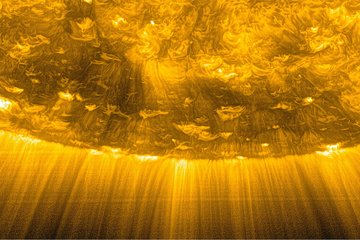All genres
1.
Journal Article
Scaling laws of coronal loops compared to a 3D MHD model of an active region. Astronomy and Astrophysics 589, A86 (2016)
2.
Journal Article
Coronal energy input and dissipation in a solar active region 3D MHD model. Astronomy and Astrophysics 580, A72 (2015)
3.
Journal Article
Coronal loops above an active region: Observation versus model. Publ. Astron. Soc. Japan 66, S7 (2014)
4.
Journal Article
Observationally driven 3D magnetohydrodynamics model of the solar corona above an active region. Astronomy and Astrophysics 555, A123 (2013)
5.
Journal Article
Denoising observational data. Contributions of the Astronomical Observatory Skalnaté Pleso 41 (2), pp. 149 - 155 (2011)
6.
Thesis - PhD
Observationally driven 3D MHD model of the solar corona above a magnetically active region. Dissertation, Georg‐August‐Univ., Göttingen (2013)










